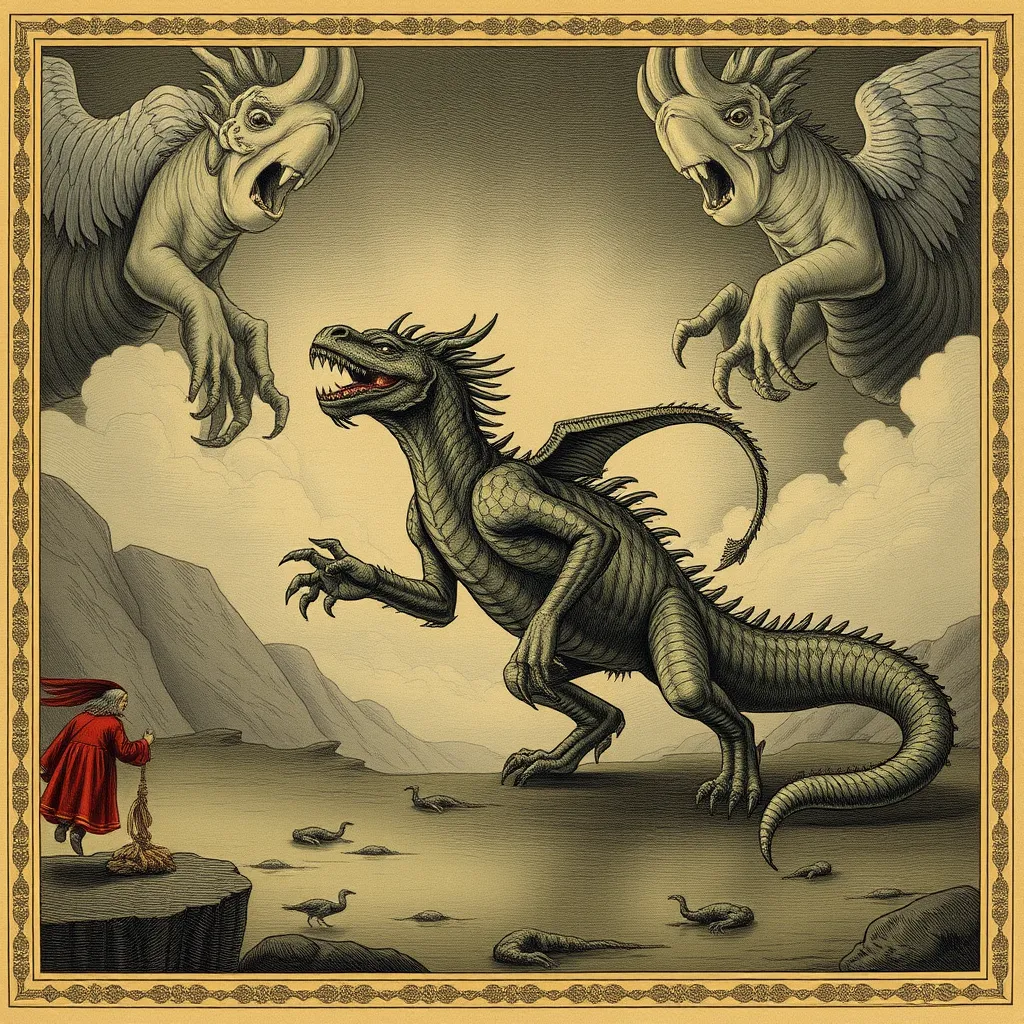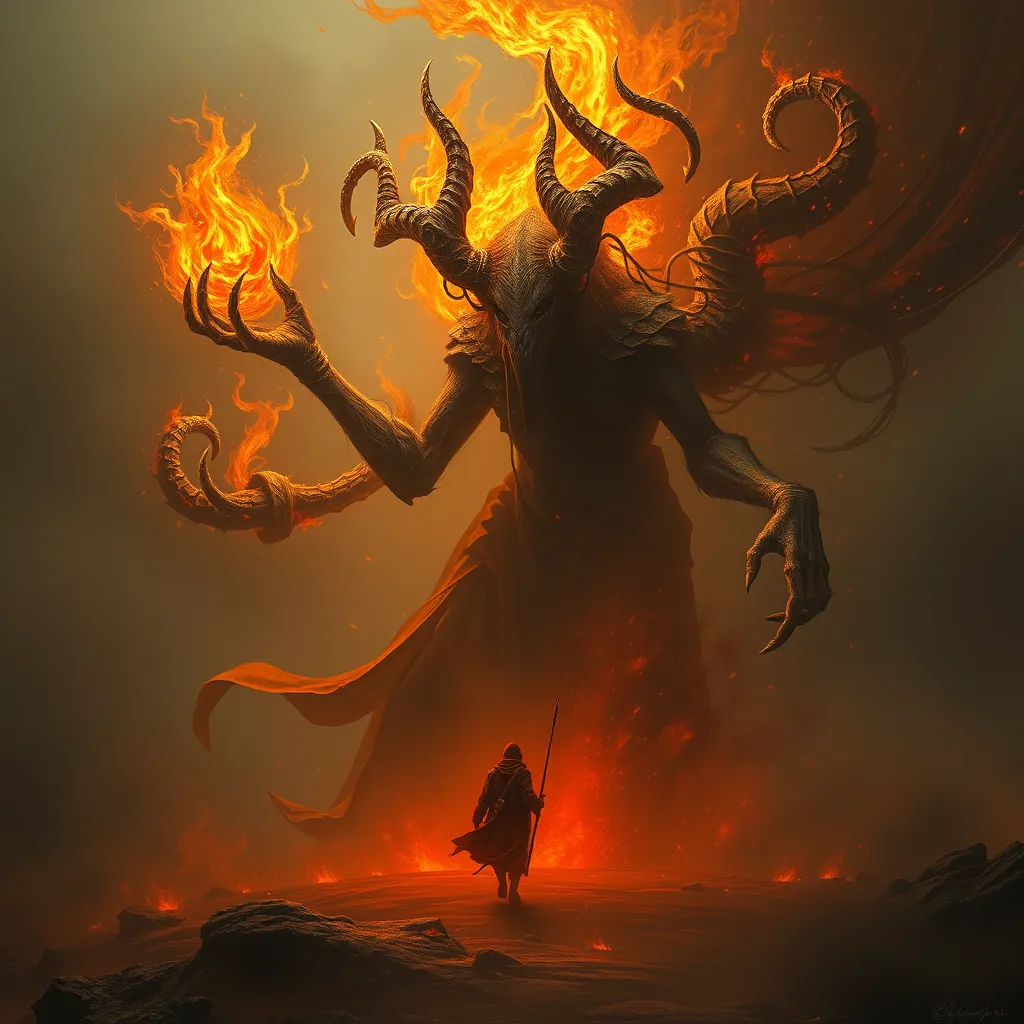The Basilisk in the Age of Enlightenment: Examining the Monster’s Transformation in the 18th Century
I. Introduction
The Basilisk, a creature steeped in folklore and mythology, has captivated imaginations for centuries. Known for its lethal gaze and formidable presence, it embodies the fears and anxieties of the cultures that have birthed it. During the Age of Enlightenment in the 18th century, a period marked by a profound shift towards reason and scientific inquiry, the Basilisk underwent a significant transformation. This article aims to explore how the portrayal of the Basilisk evolved during this era, reflecting broader cultural narratives and the changing landscape of human understanding.
II. Historical Background of the Basilisk
A. Origins of the Basilisk in Ancient Texts
The origins of the Basilisk can be traced back to ancient texts, with its first mentions appearing in Greek and Roman literature. The creature was often described as a serpent or lizard, reputed to possess the ability to kill with its gaze. The term “Basilisk” itself derives from the Greek word “basiliskos,” meaning “little king,” indicative of its perceived majesty and danger.
B. Evolution of the Basilisk’s Characteristics in Medieval European Lore
As the Basilisk made its way into medieval European culture, its characteristics evolved significantly. In the Middle Ages, it was depicted as a hybrid creature, often portrayed with elements of both serpent and bird, particularly a rooster. Medieval bestiaries described it as a creature that could not only kill with its stare but also with its breath, reinforcing its role as a symbol of evil and chaos.
C. The Basilisk as a Symbol of Fear and Danger
Throughout history, the Basilisk has represented the unknown and the dangers lurking in the natural world. It became a symbol of fear, embodying humanity’s anxieties about the dark forces of nature and the supernatural. Its lethal capabilities made it a creature of terror in both folklore and the collective imagination.
III. The Enlightenment Shift: Rationality vs. Myth
A. The Enlightenment’s Emphasis on Reason and Scientific Inquiry
The Age of Enlightenment heralded a new era of rational thought, where reason and empirical evidence began to overshadow superstition and myth. Scholars and philosophers sought to understand the world through observation and scientific methods, leading to a questioning of traditional beliefs, including those surrounding mythical creatures like the Basilisk.
B. The Decline of Superstition and Its Impact on Monstrous Creatures
As the Enlightenment progressed, belief in the supernatural waned. This decline in superstition had a profound impact on how monstrous creatures were perceived. The Basilisk, once feared as a real and tangible threat, began to be viewed more as a metaphor for the unknown rather than a physical reality.
C. The Basilisk as a Reflection of Changing Societal Attitudes Toward Monsters
The transformation of the Basilisk during this period reflects a broader cultural shift. No longer merely a creature of terror, it became a symbol of the limits of human understanding and the mysteries that remained unsolved, paralleling the Enlightenment’s quest for knowledge.
IV. Literary Representations of the Basilisk in the 18th Century
A. Key Literary Works Featuring the Basilisk
In the 18th century, the Basilisk appeared in various literary works, including poetry, plays, and early novels. Notable examples include:
- John Milton’s “Paradise Lost” – While not a primary focus, the creature symbolizes the chaos of evil.
- Voltaire’s “Zadig” – The Basilisk’s metaphorical implications about knowledge and ignorance are explored.
- Many Gothic novels – The Basilisk often appears as an emblem of the monstrous, reflecting societal fears.
B. Analysis of How These Texts Portray the Basilisk’s Transformation
In these texts, the portrayal of the Basilisk often reflects the tension between myth and reason. It is depicted less as a literal threat and more as a symbol of the darker aspects of human nature and the unknown. The creature serves as a cautionary tale, warning against the perils of unexamined beliefs and the dangers that lurk within the depths of the human psyche.
C. The Basilisk as a Metaphor for Enlightenment Ideals and Fears
The Basilisk can also be interpreted as a metaphor for Enlightenment ideals, representing the fear of ignorance in an age striving for knowledge. Its lethal gaze suggests the dangers of unchecked curiosity and the potential for knowledge to lead to destruction.
V. The Basilisk in Art and Culture
A. Artistic Depictions of the Basilisk During the 18th Century
Artistic representations of the Basilisk during the 18th century varied widely, from fearsome illustrations in natural history texts to more whimsical portrayals in satirical works. Artists often used the creature as a vehicle to comment on contemporary societal issues.
B. The Role of Visual Culture in Shaping Public Perception of the Monster
Visual culture played a crucial role in shaping public perception of the Basilisk. As art became more accessible, the creature was reimagined in various forms, influencing how society viewed both the monster and the fears it represented. The Basilisk became a subject of fascination, embodying the mysteries of nature and the unknown.
C. Connections Between Art, Science, and the Narrative of the Basilisk
The intersection of art and science during the Enlightenment allowed for richer interpretations of the Basilisk. Artists and scientists alike sought to explore the boundaries of knowledge, often using the Basilisk as a symbol of humanity’s ongoing struggle to understand the natural world.
VI. The Basilisk and Natural Philosophy
A. The Intersection of Myth and Emerging Scientific Thought
As natural philosophy began to gain prominence, the Basilisk found itself caught between the realms of myth and emerging scientific thought. Naturalists sought to categorize and understand creatures of folklore, often dismissing the Basilisk as a mere myth while acknowledging its cultural significance.
B. The Basilisk’s Place in Discussions of Natural History and Taxonomy
The creature’s place in discussions of natural history reflected the era’s changing attitudes. While it was increasingly relegated to the realm of myth, the Basilisk prompted discussions about taxonomy and the classification of animals, symbolizing the limits of human understanding in a rapidly evolving scientific landscape.
C. The Creature as a Symbol of the Limits of Human Understanding
The Basilisk emerged as a symbol of the limits of human understanding, embodying the mysteries that science had yet to unravel. Its transformation during the Enlightenment highlighted the tension between knowledge and ignorance, reflecting humanity’s ongoing quest to comprehend the natural world.
VII. The Legacy of the Basilisk Post-Enlightenment
A. How the Transformation of the Basilisk Influenced Later Literature and Folklore
The transformation of the Basilisk during the Enlightenment left an indelible mark on later literature and folklore. It inspired writers to explore themes of knowledge, fear, and the monstrous, influencing gothic literature and the horror genre.
B. The Basilisk’s Role in Contemporary Culture and Media
In contemporary culture, the Basilisk continues to captivate audiences. From films to literature and video games, the creature’s legacy endures, often serving as a symbol of the unknown or as a metaphor for societal fears.
C. Reflections on the Enduring Fascination with Monsters Through the Lens of History
The enduring fascination with monsters, including the Basilisk, reflects humanity’s complex relationship with fear and the unknown. By examining these creatures through the lens of history, we gain insights into the cultural shifts that shape our understanding of both the natural world and ourselves.
VIII. Conclusion
The transformation of the Basilisk during the 18th century illustrates a significant cultural shift from superstition to reason, reflecting the broader changes occurring during the Age of Enlightenment. By studying mythical creatures like the Basilisk, we can gain valuable insights into the societal anxieties and aspirations of the time, as well as the enduring fascination with monsters that persists to this day. The Basilisk stands as both a product of its time and a timeless symbol of human fears and curiosities, inviting us to explore the depths of our imagination and the complexities of our understanding.




